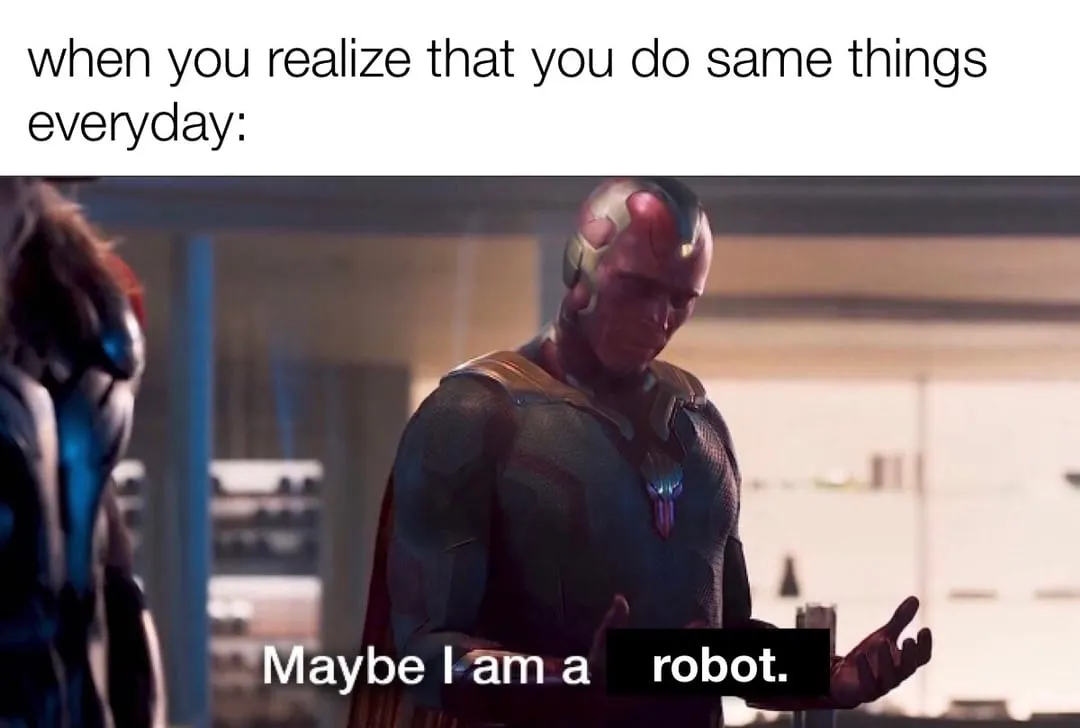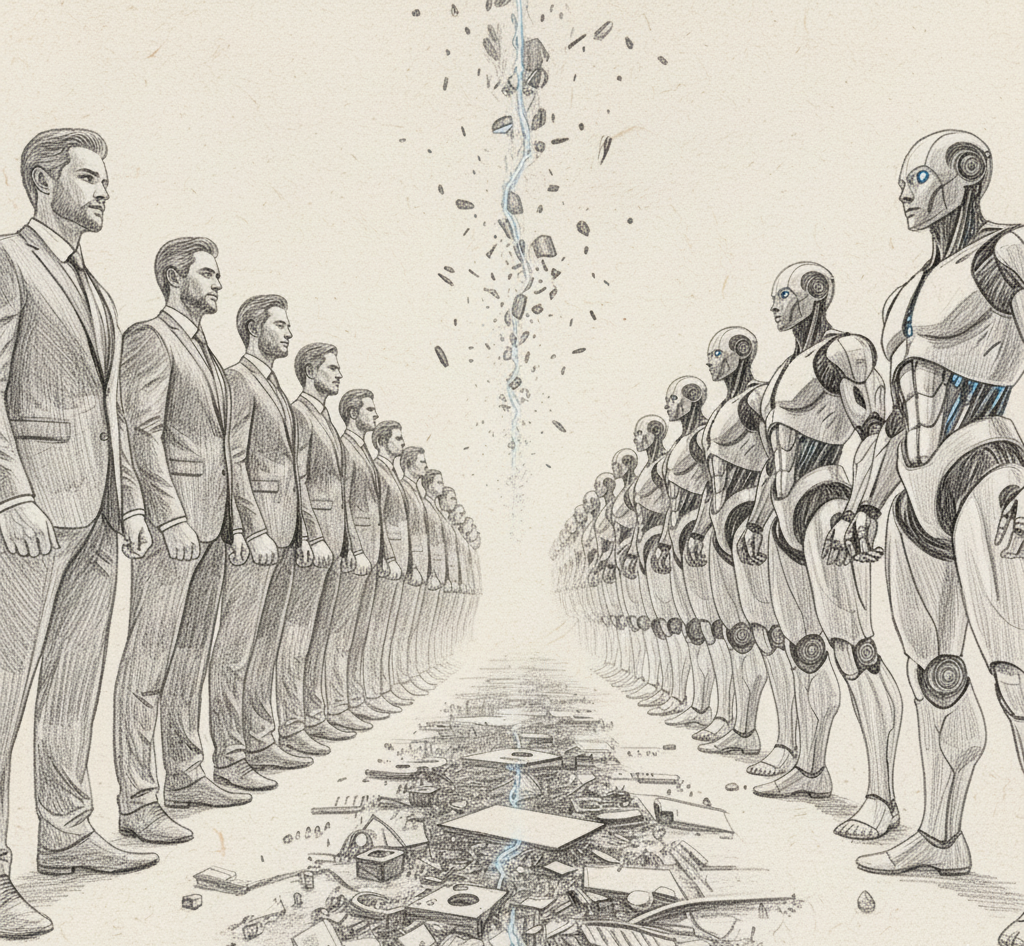Bots are running social media not humans.
you are being scammed, daily millions of bots do comments , likes etc.
Why AI Can Never Defeat Humans


The headlines scream about AI taking over. ChatGPT writes essays. Midjourney creates art. AlphaGo defeats world champions. Self-driving cars navigate our streets. Every week brings news of another domain where artificial intelligence has matched or exceeded human performance.
But here's what the sensational headlines miss: AI isn't defeating humans. It's becoming a more sophisticated tool in human hands.
The narrative of "AI versus humans" fundamentally misunderstands what intelligence is, what consciousness means, and what makes us irreplaceably human. Despite the exponential growth in AI capabilities, there are fundamental aspects of human cognition, creativity, and existence that artificial intelligence can never replicate.
Not because the technology isn't advanced enough. But because of what it means to be human.
Let's address the elephant in the room: the fear that AI will surpass human intelligence and render us obsolete.
This fear stems from a category error. It assumes that intelligence is a single, measurable dimension - like comparing the horsepower of engines. Under this view, AI is simply getting more "horsepower" until it zooms past human capabilities entirely.
But intelligence isn't one-dimensional. Human intelligence isn't just processing power or pattern recognition. It's a rich tapestry woven from consciousness, embodied experience, emotional depth, moral reasoning, creativity, and something we might call wisdom.
AI excels at optimization. Humans excel at meaning-making.
And that distinction changes everything.
Before we dive into what makes humans irreplaceable, let's be clear about what modern AI actually is.
Pattern Recognition at ScaleAI can process millions of images and learn to identify cats, tumors, or fraudulent transactions with superhuman accuracy. It finds patterns in data that humans would never spot simply because we can't process information at that scale.
Optimization Within Defined ParametersGive AI a clear objective function and constraints, and it will find solutions that maximize that function better than any human could. AlphaGo didn't beat humans at Go by "thinking" like a human - it explored more possibilities and optimized more effectively.
Consistency and TirelessnessAI doesn't get tired, distracted, or emotional. It can perform the same task millions of times with identical precision. For repetitive tasks requiring consistency, AI is unmatched.
Processing SpeedAI can analyze years of legal documents in minutes, generate thousands of design variations in seconds, or simulate complex scenarios faster than any human team.
Understand Context Beyond DataAI learns from data. But data is always a simplification of reality. AI has no way to understand the infinite contextual nuances that don't appear in its training set. It can't intuit what's missing. It can't ask "what am I not seeing?"
Generate Truly Novel IdeasAI recombines existing patterns in novel ways. That can look creative, but it's fundamentally different from human creativity that draws connections across completely disparate domains, that asks "what if?" in ways no training data suggested.
Experience QualiaAI doesn't "experience" anything. When an image recognition model identifies a sunset, it's not experiencing the beauty, the warmth, the nostalgia. It's mapping pixels to labels. The subjective experience of being - consciousness itself - remains entirely absent.
Make Value JudgmentsAI can optimize for defined values, but it cannot determine what should be valued in the first place. It can't wrestle with moral dilemmas, weigh competing goods, or feel the weight of ethical responsibility.
Human intelligence isn't just in our brains. It's in our bodies, our senses, our physical existence in the world.
When you catch a ball, you're not running calculations. Your body knows, through years of embodied experience, how objects move through space. When you taste food and decide it needs "something," that's your tongue, your gut, your entire sensory history making a judgment no algorithm can replicate.
The dancer's knowledge lives in muscle memory, not databases. The chef's intuition comes from thousands of meals, not recipe analysis. The surgeon's touch can feel what no camera can see.
AI can simulate physical processes, but it cannot be embodied. It doesn't have the lived experience of hunger, fatigue, desire, or physical presence that fundamentally shapes how humans understand and interact with the world.
A robot might learn to walk through trial and error, but it will never know what it feels like to walk on a beach at sunset, to feel sand between your toes, to experience the joy of running freely. And that embodied experience shapes everything about how humans think, create, and understand.
Consciousness - the subjective experience of being - is called the "hard problem" of neuroscience for good reason. We still don't know how physical processes in the brain give rise to subjective experience.
What's it like to be you?
You have an inner life. You experience qualia - the redness of red, the painfulness of pain, the joy of joy. You have a first-person perspective on existence itself.
AI has no inner life. When GPT-4 generates text, there's no "experience" of generating text. When an image classifier looks at a photo, it doesn't "see" anything. It processes input and produces output. The lights are on, but nobody's home.
Some argue that sufficiently complex systems might develop consciousness. But decades of progress in AI have brought us no closer to understanding how subjective experience could emerge from computation. We've built systems that simulate conversation, creativity, even emotion - but simulation is not experience.
You can program a robot to say "I'm happy," but you cannot program actual happiness.
Intelligence is knowing that a tomato is a fruit. Wisdom is knowing not to put it in a fruit salad.
Wisdom is different from knowledge or intelligence. It's the ability to apply knowledge appropriately in context, to understand not just what is true but what is important, to see patterns across time and experience that transcend data.
Wisdom includes:
A wise person can look at two "correct" courses of action and choose based on subtle factors that no algorithm could capture - the mood in the room, the unspoken needs of stakeholders, the cultural moment, the lessons of history.
AI can be smart. Only humans can be wise.
Morality isn't a set of rules. It's a constant negotiation between competing values, context-dependent judgments, and the weight of responsibility.
Consider a self-driving car facing the trolley problem: swerve and hit one person, or continue straight and hit five?
AI can be programmed with decision rules. But it can't wrestle with the moral weight of that decision. It can't feel the gravity of taking a life. It can't understand that sometimes there is no "right" answer - only terrible choices and the burden of making them.
Human morality includes:
Contextual judgment - The same action can be heroic in one context and criminal in another. Stealing bread to feed your starving child is different from stealing for profit. Humans understand these distinctions intuitively.
Moral development - Humans grow morally throughout their lives. We learn from mistakes, we develop empathy, we refine our values. AI doesn't "develop" morally - it has programmed values or learns to mimic moral language from training data.
Ethical responsibility - When a human makes a decision, they can be held morally accountable because they have agency and consciousness. AI has neither. Who is responsible when an algorithm makes a harmful decision? The programmer? The company? The AI itself? The question reveals the absurdity.
Moral intuition - Sometimes we know something is wrong before we can articulate why. Our gut tells us. That moral intuition, refined by evolution and culture, is something AI cannot replicate.
AI-generated art is impressive. But is it creative in the way humans are creative?
AI learns patterns from millions of examples and recombines them in novel ways. That can produce surprising, beautiful, even seemingly original results. But it's pattern recombination, not true originality.
Human creativity involves:
Cross-domain insight - The greatest creative breakthroughs come from connecting ideas from completely different fields. Einstein's relativity came partly from thought experiments about riding on light beams - a metaphorical, imaginative leap no amount of physics data would suggest.
Breaking established patterns - True creativity often means violating the very patterns that AI learns from. The Impressionists rejected academic painting conventions. Jazz musicians broke musical rules. Creative revolutionaries see beyond the patterns to create something genuinely new.
Creative constraint - Humans are most creative when working within constraints. Sonnets have rigid structures, but that structure enables rather than limits creativity. AI treats constraints as optimization parameters. Humans use constraints as creative challenges.
Meaning-making - Human art isn't just aesthetically interesting - it means something. It comments on the human condition, explores emotions, challenges assumptions. An AI can generate a painting that looks like it means something, but the meaning is in the human interpretation, not the AI's "intent."
The artist's suffering, joy, lived experience flows into their work. AI has no experience to draw from, no perspective to express.
Humans don't just think and create. We love. We connect. We find meaning.
These aren't bugs in the human system - they're features. They're what makes life worth living.
Humans experience:
Deep emotional bonds - The love between parent and child, between partners, between friends. These bonds shape our decisions, our values, our sense of self. They can't be reduced to chemical reactions or evolutionary imperatives, even if those play a role.
Existential meaning - Humans ask "why?" We seek purpose. We create narratives that give our lives meaning. We grapple with mortality, legacy, transcendence. AI can process information about meaning, but it cannot experience the need for meaning.
Empathy and compassion - When you see someone suffering, you don't just recognize the pattern of suffering - you feel something. Mirror neurons fire. Your heart responds. You're moved to help not because of programmed altruism but because of genuine care.
Aesthetic appreciation - You can train AI to identify "beautiful" images based on human preferences. But AI doesn't experience beauty. It doesn't feel moved by a sunset or stirred by music. The subjective experience of beauty remains uniquely human.
Community and belonging - Humans are deeply social creatures. We derive meaning from our relationships, our communities, our sense of belonging to something larger than ourselves. We create culture, tradition, shared stories. AI can participate in networks, but it cannot experience belonging.
AI is getting better at transfer learning - applying knowledge from one domain to another. But human adaptability operates on a fundamentally different level.
When faced with a completely novel situation, humans:
Improvise creatively - We can figure out solutions using resources at hand in ways we've never encountered before. MacGyver isn't just a TV trope - it's a distinctly human capability.
Apply abstract principles - We can take general principles from one domain and apply them to a completely different domain because we understand the underlying concepts, not just the patterns.
Learn from minimal examples - Show a child one picture of a giraffe, and they can identify giraffes in completely different contexts, from different angles, stylized drawings, even stuffed animals. They understand the concept, not just the pixels.
Reason about counterfactuals - "What if things had been different?" We can imagine alternative scenarios and reason about them. This counterfactual reasoning is crucial for planning, learning from mistakes, and creative problem-solving.
Change our minds - Humans can fundamentally shift their worldview when presented with compelling evidence or arguments. We can have genuine paradigm shifts. AI can be retrained, but that's different from the lived experience of changing your mind.
Here's the reality that the "AI versus humans" narrative misses entirely:
The future isn't AI defeating humans. It's humans wielding AI as an increasingly powerful tool.
Think about how humans have always used tools. The wheel didn't defeat humans - it made us more mobile. The printing press didn't defeat humans - it amplified our ability to share ideas. Calculators didn't defeat mathematicians - they freed them to focus on higher-level problems.
AI is the next tool in a long line of tools that extend human capabilities.
AI handles optimization, humans handle meaning
AI provides options, humans make choices
AI processes data, humans provide context
AI scales consistency, humans handle edge cases
AI augments creativity, humans provide vision
The idea that AI might "defeat" humans isn't just wrong - it's dangerous. It shapes policy, business decisions, and personal choices in harmful ways.

People worry about being "replaced" by AI, leading to resistance against tools that could genuinely help them. Teachers fear AI tutors instead of using them to personalize learning. Doctors resist diagnostic AI instead of using it to catch things they might miss.
Companies chase AGI (Artificial General Intelligence) when they should be building AI that complements human capabilities. They try to replace humans instead of augmenting them, often with disappointing results.
"The AI decided" becomes an excuse for human abdication of moral responsibility. But AI doesn't decide anything - humans decide to use AI in particular ways. We can't outsource accountability to algorithms.
When we frame everything as "can AI do this yet?", we start measuring human value by machine standards. But human value isn't just in our computational efficiency. It's in our consciousness, our creativity, our capacity for love and meaning.
At the core, what makes humans irreplaceable isn't our processing speed or our perfect recall. It's our subjective experience of being alive.
We experience life. AI processes information.
We feel joy and sorrow. We love and grieve. We create meaning from chaos. We grapple with moral dilemmas. We dream of futures that don't exist yet. We tell stories that help us make sense of our existence.
We are biological beings with evolutionary histories, cultural contexts, personal experiences, emotional depths, and moral responsibilities.
We are embodied, conscious, meaning-seeking creatures - and no amount of computational power changes that fundamental reality.
The question isn't "will AI defeat humans?" The question is "how do we build AI that serves human flourishing?"
Build AI tools that make humans better at what they do, rather than trying to eliminate humans from the process. The best AI applications enhance human capabilities rather than replacing them.
For consequential decisions - healthcare diagnoses, legal judgments, financial investments, hiring decisions - always maintain human oversight. AI can inform, but humans must decide.
As AI handles more routine cognitive tasks, humans should double down on capabilities AI cannot replicate:
We build AI to serve human goals, human values, human flourishing. The moment we flip that relationship - when we start asking what humans can do to serve AI's needs - we've lost the plot entirely.
AI will continue to advance. It will match and exceed human performance in more domains. It will become more sophisticated, more capable, more impressive.
And none of that defeats what makes us human.
Because being human isn't about processing speed or pattern recognition. It's about consciousness, creativity, connection, and meaning. It's about living in a body, experiencing emotions, making moral choices, and finding purpose.
AI can be a tool, a partner, an amplifier of human capability. But it cannot be human.
And that's not a limitation we need to overcome. It's a fundamental truth we need to remember.
The future belongs not to AI or to humans in isolation, but to humans wielding AI as an increasingly powerful tool in service of human flourishing. The question isn't whether AI will defeat us.
The question is: what will we build together?
What aspects of being human do you find most irreplaceable? How do you see AI fitting into your work and life in ways that enhance rather than replace your humanity? Share your thoughts in the comments below.